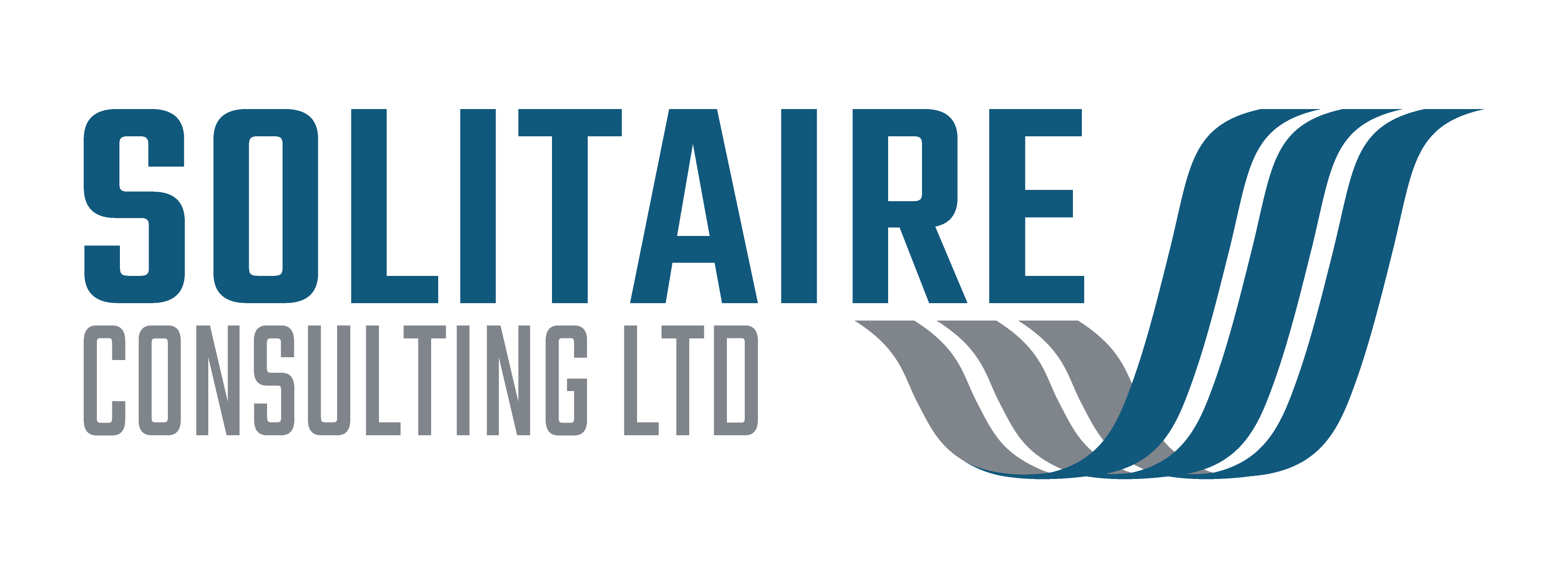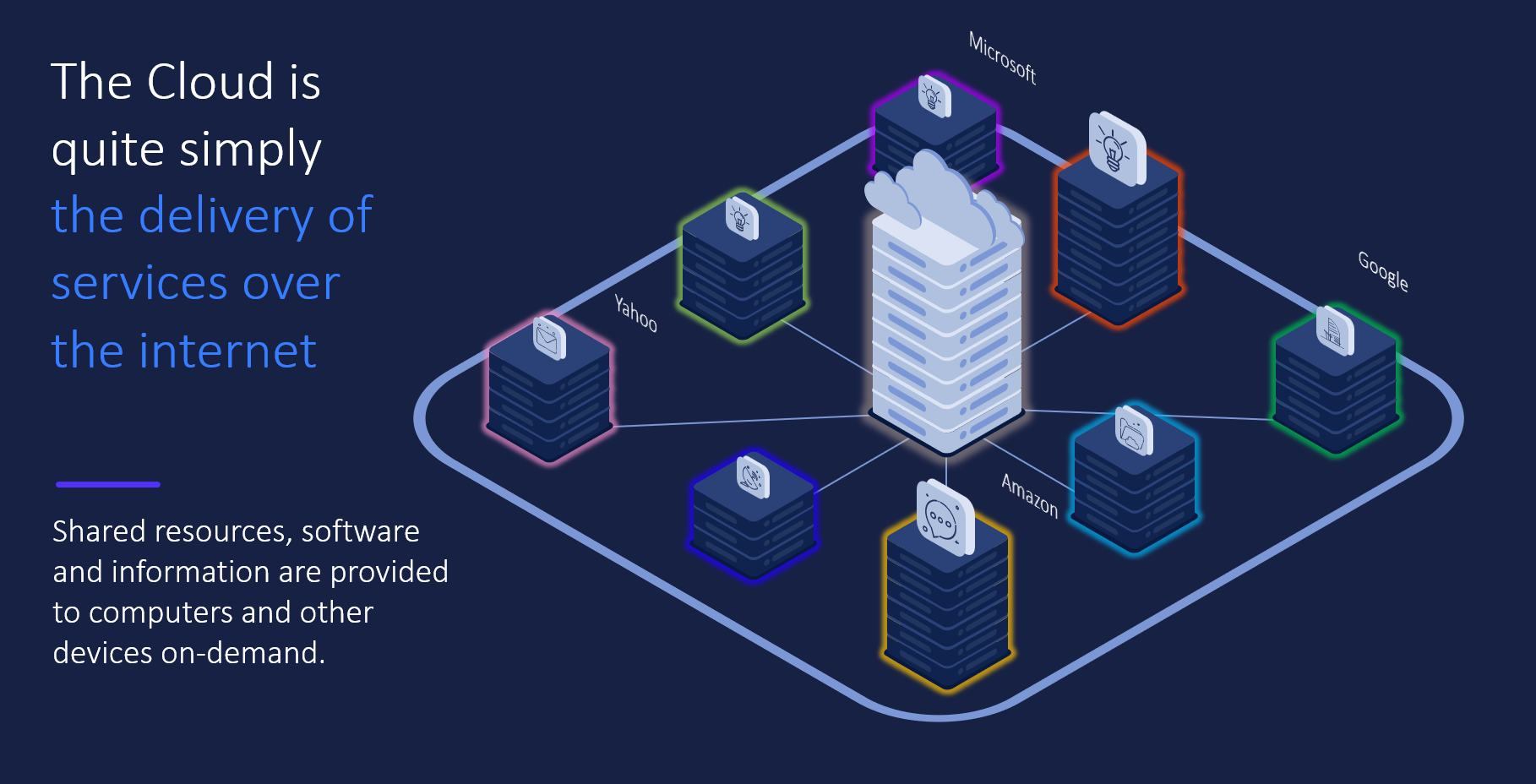
This article is based on Vega Technolgy‘s event on “Demystifying the Cloud” held in Guernsey in February 2023. The event was opened by Vega Technology’s Managing Director David Collings who introduced speakers Paul Every from Solitaire Consulting and Dan Brown from Resolution IT. Paul presented the business benefits of the cloud, whilst Dan focused on various cloud deployment options and their pros and cons.
This article will summarise the presentations from Paul and Dan, whilst a future article will review the new cloud based products being offered by Vega Technology.
What is ‘the cloud’?
The Cloud is not new and has been around since the start of the internet. In simple terms the cloud is using computer servers / resources that are accessed over the internet, as well the software and databases that run on those servers. Or in simple terms the cloud is ‘using someone else’s computer‘.
Types of Cloud

When we think about the cloud, we tend to think of the global providers like Google, Amazon and Microsoft. These vendors all provide Public Cloud services, where the resources can be accessed by anyone with an internet connection and, of course, valid credentials. These public cloud services use multiple data centres across the globe. The services offered are typically ‘multi-tenanted’ which means they are shared by multiple people across many countries and organisations.
In contrast Private Cloud services are only available to users for one specific organisation or group. The datacentre(s) are still remote from the organisation and services are still accessed over the internet, but they are not shared.
A Hybrid Cloud environment comprises a mix of Public, Private and in many cases traditional on-premise IT services.
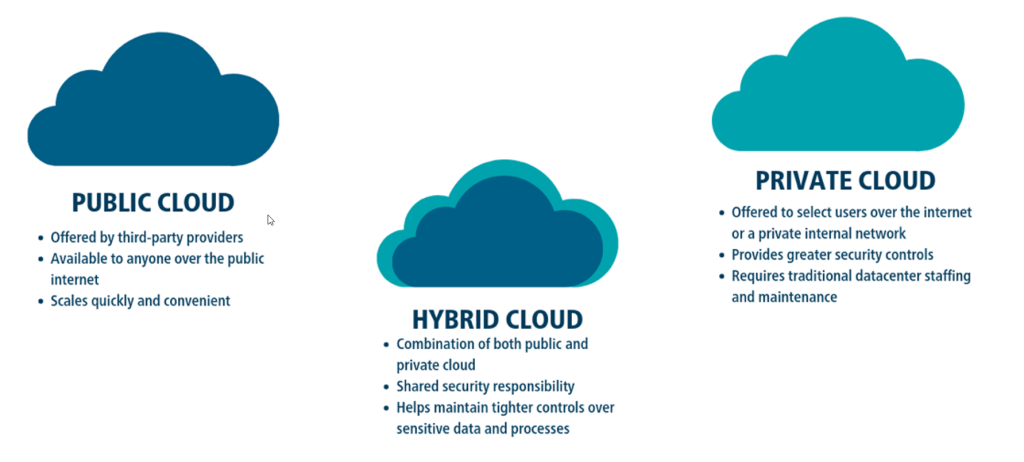
Benefits of the Public Cloud

Demystifying the cloud
There are many myths surrounding the adoption of cloud, often cited by traditionalists who either don’t fully understand the cloud or who feel threatened by its expansion.
Myth: “My data is more secure if it is in a server in my office”
Reality: Cloud providers spend billions on securing their clients data. This is far more than most organisations can afford to spend on their security. Even enterprise level firewalls and switches won’t come close to the strength of the defences global cloud providers will be implementing. In 2021 Microsoft announced that it will invest $20 billion over the next 5 years in cybersecurity to protect its services, four times its previous investments of $1 billion per year.
Myth: “We can’t use public cloud because we are located in Guernsey / Jersey / Luxembourg etc.”
Reality: The location of data is not important (within reason). However, the location of the management of that data is critical. There are very few legal or regulatory barriers that restrict the location of an organisations data. Some legal requirements such as GDPR will have safeguards in place to ensure that data is suitably protected but this does not mean it has to remain in the ‘home’ location. Some companies may have restrictions in their client terms and conditions, which require them to consult or even request permission to move data to another location. This needs to be considered but it doesn’t necessarily prevent the adoption of cloud.
Myth: “It will cost us more to go into the cloud”
Reality: When factoring all IT direct and indirect costs, public cloud services provide better value for money than equivalent on-premise services. There can be a change in the type of cost when moving to the cloud. Traditionally IT costs were capital intensive. Hardware needed to be procured, paid for up front and then depreciated over a number of years. Similarly on-premise software was often purchase on a perpetual licence with high up front costs. However, cloud services are generally procured on a subscription or pay as you go model. Consequently your costs move from Capex to Opex.
Do be careful with over specifying cloud services and only purchase the compute resources you need. These services can be ‘bursted’ or increased for specific periods of time e.g. month ends.
Cloud application deployment options
Modern Desktop
The modern desktop is typically based on Microsoft 365 and is characterised by domain joined laptop computers with a permanent VPN connected to the Microsoft cloud. Microsoft applications including Teams, Outlook and the Office suite reside on the laptop connected to the cloud. All workloads are installed on the desktop connected to remote cloud-based (typically Azure SQL) databases. This is how Vega’s Acumen 365 product is installed.

Published Applications
The Published Application model is similar to the Modern Desktop, but workloads are split between the desktop (laptop) and the cloud, meaning less load is placed on the desktop. Workloads are hosted by a third party vendor as a managed service.
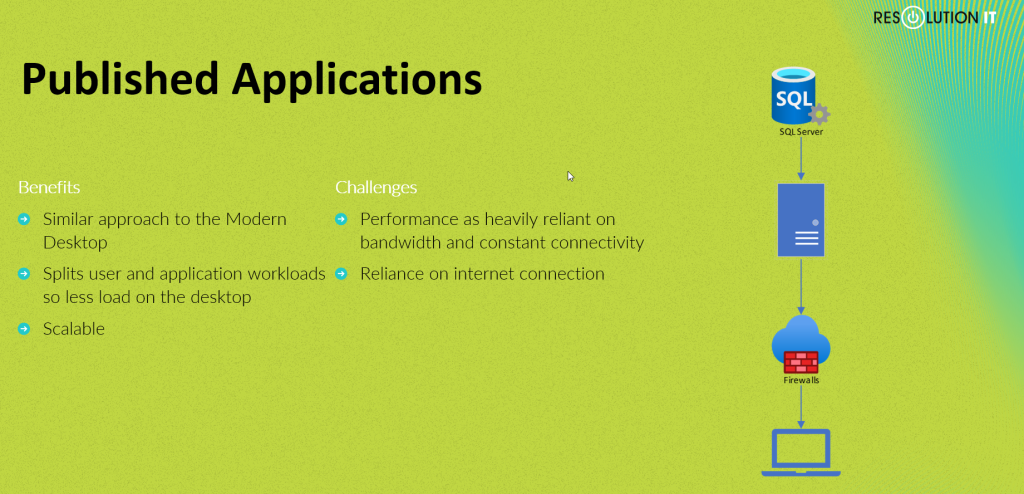
Web Application
With Web Applications all workloads are hosted in the Cloud as SaaS applications or installed in Azure (or via other vendor cloud services). The desktop only requires a browser to run so suits browser only devices such as Chromebook’s, tablets and phones.
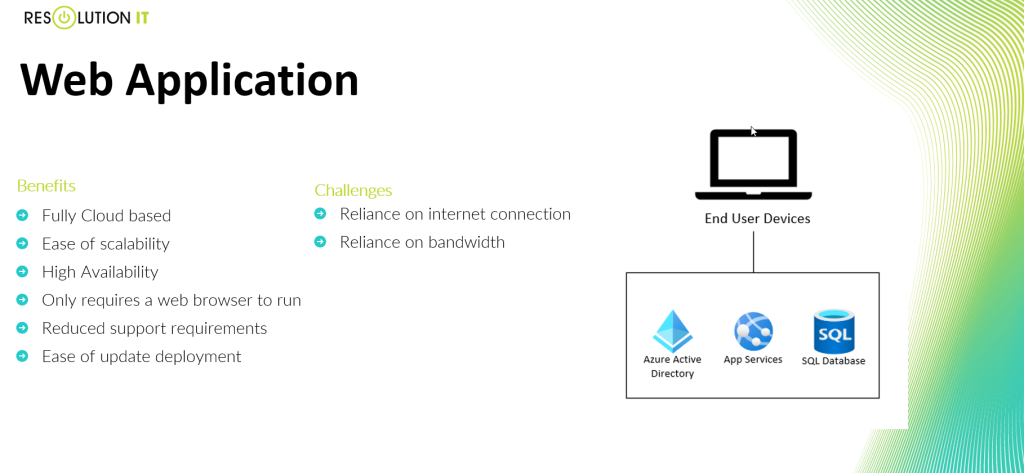
Virtual Desktops
With a Virtual Desktop, again everything is in the cloud and all services can be connected to any device capable of hosting a browser. The complete desktop experience is provided over the internet so can be suitable for applications that are not cloud-ready.

Summary
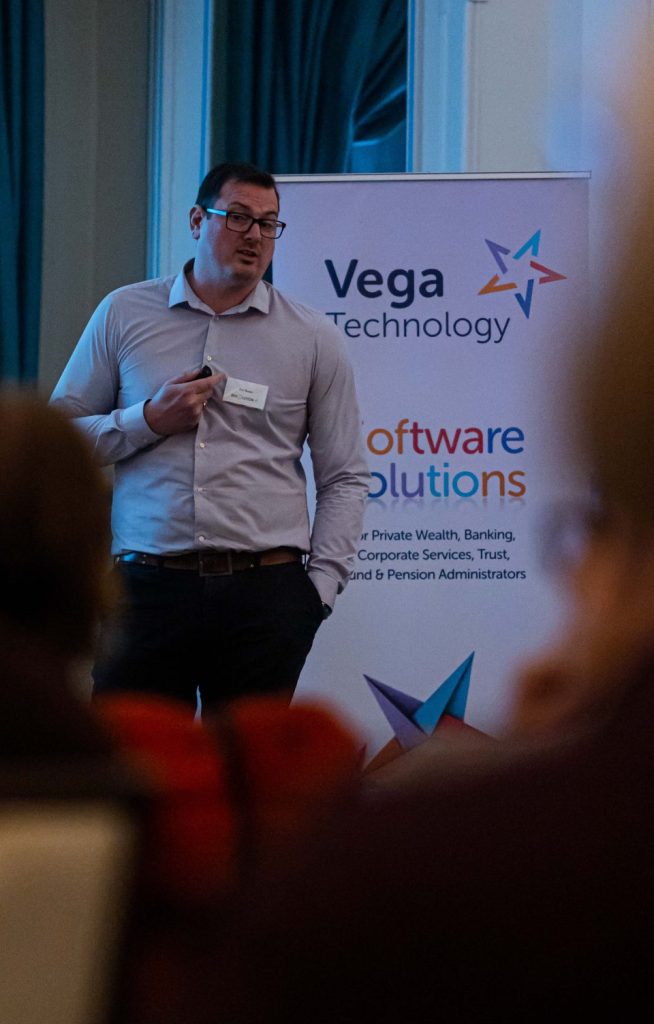
The cloud is not going away, and it was interesting to note that from the Guernsey based audience where this event was first hosted, there was not a single business that didn’t have some exposure to the cloud. Some businesses declared to be fully in the public cloud with no private server based infrastructure.
We are seeing a general trend moving from On-Premise through Private Cloud, Hybrid environments to full Public Cloud. The speed of moving to public cloud is largely determined by software delivery mechanisms and the time it takes organisations to move away from legacy on-premise only software.
Similarly in software delivery we are seeing a trend for software to move away from instructure as a service (IaaS) delivery through platform as a service (PaaS) to full software as a service (SaaS).
The benefits of cloud technologies include reduced cost, scalability, flexibility, resilience, security, and perhaps most importantly in the modern workplace the ability to collaborate more effectively with clients and suppliers.
Like any complex and highly changing technology, Cloud does not come without its challenges. These challenges include security, integration with legacy applications, connectivity to the internet and of course cost of adoption / migration.
“Think Big, Start Small, Act Now!“
It is essential to create an ambitious vision for how the cloud can transform your business, but to implement this incrementally starting with small changes. This helps to gain experience whilst getting early benefit. Most importantly start now before getting too far behind your competitors.
The most important advice though is to seek advice, whether this is from your current IT Service Provider another vendor like Resolution IT, or an independent consultancy like Solitaire Consulting. If in doubt give us a call and we’d be happy to discuss your circumstances and point you in the right direction.
